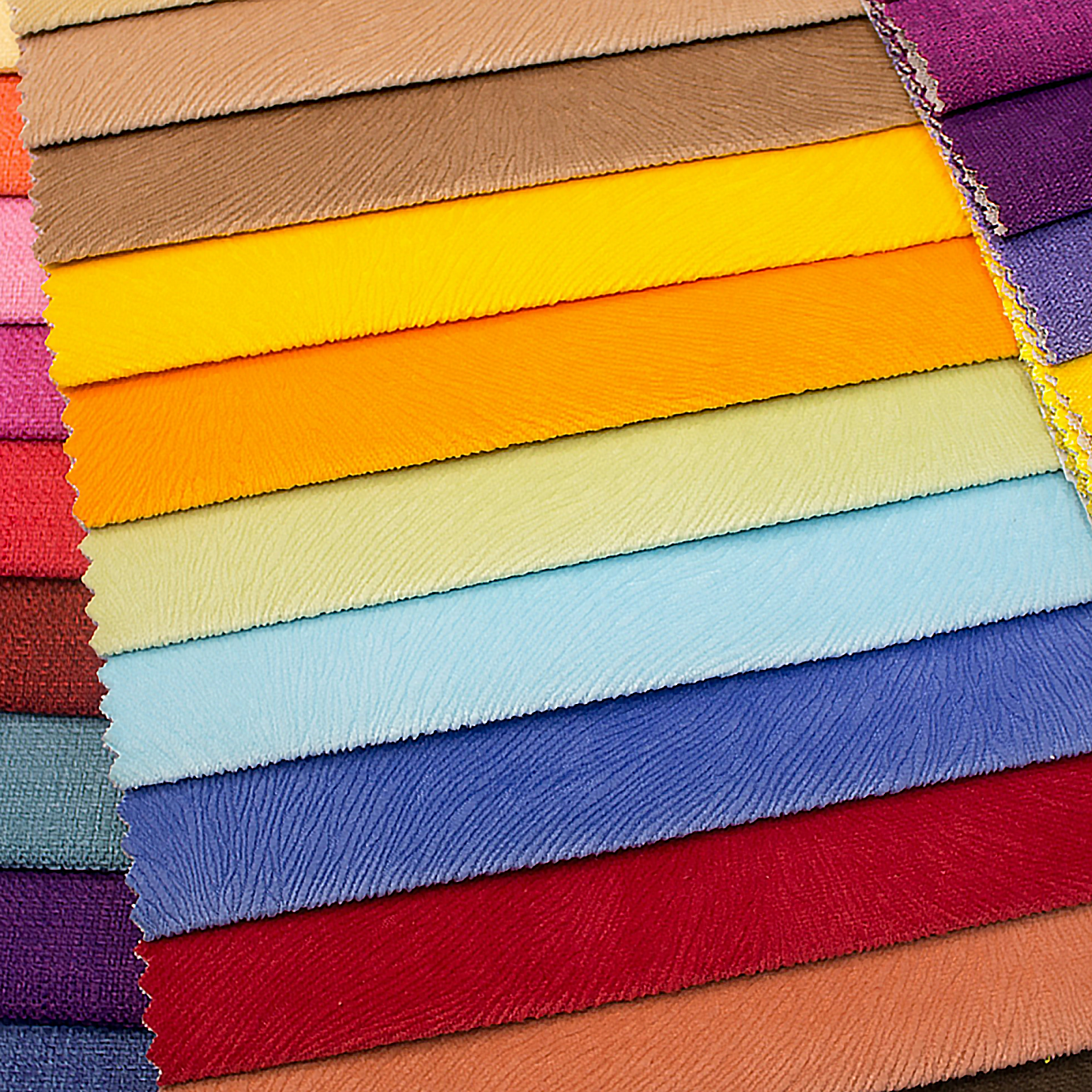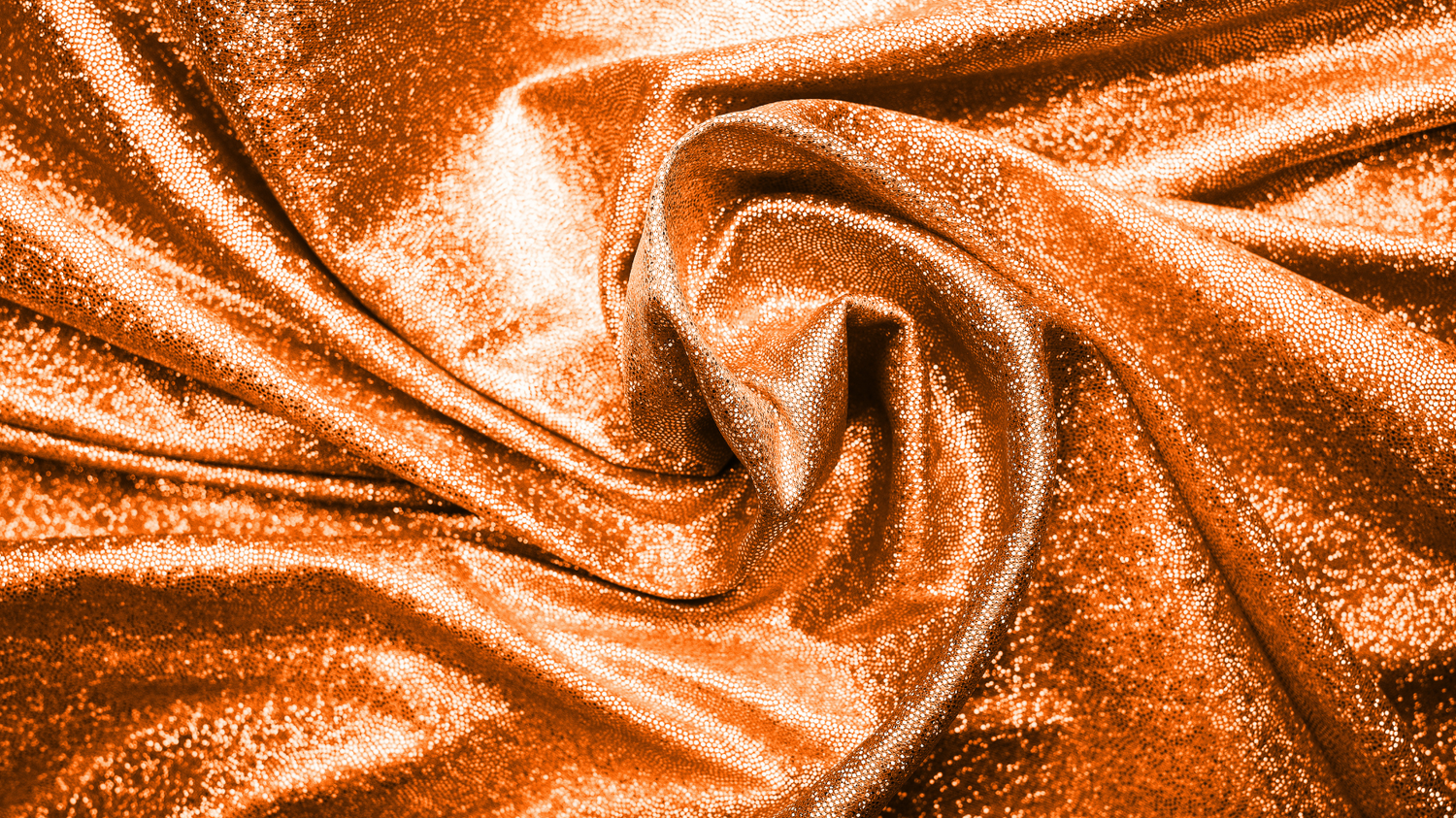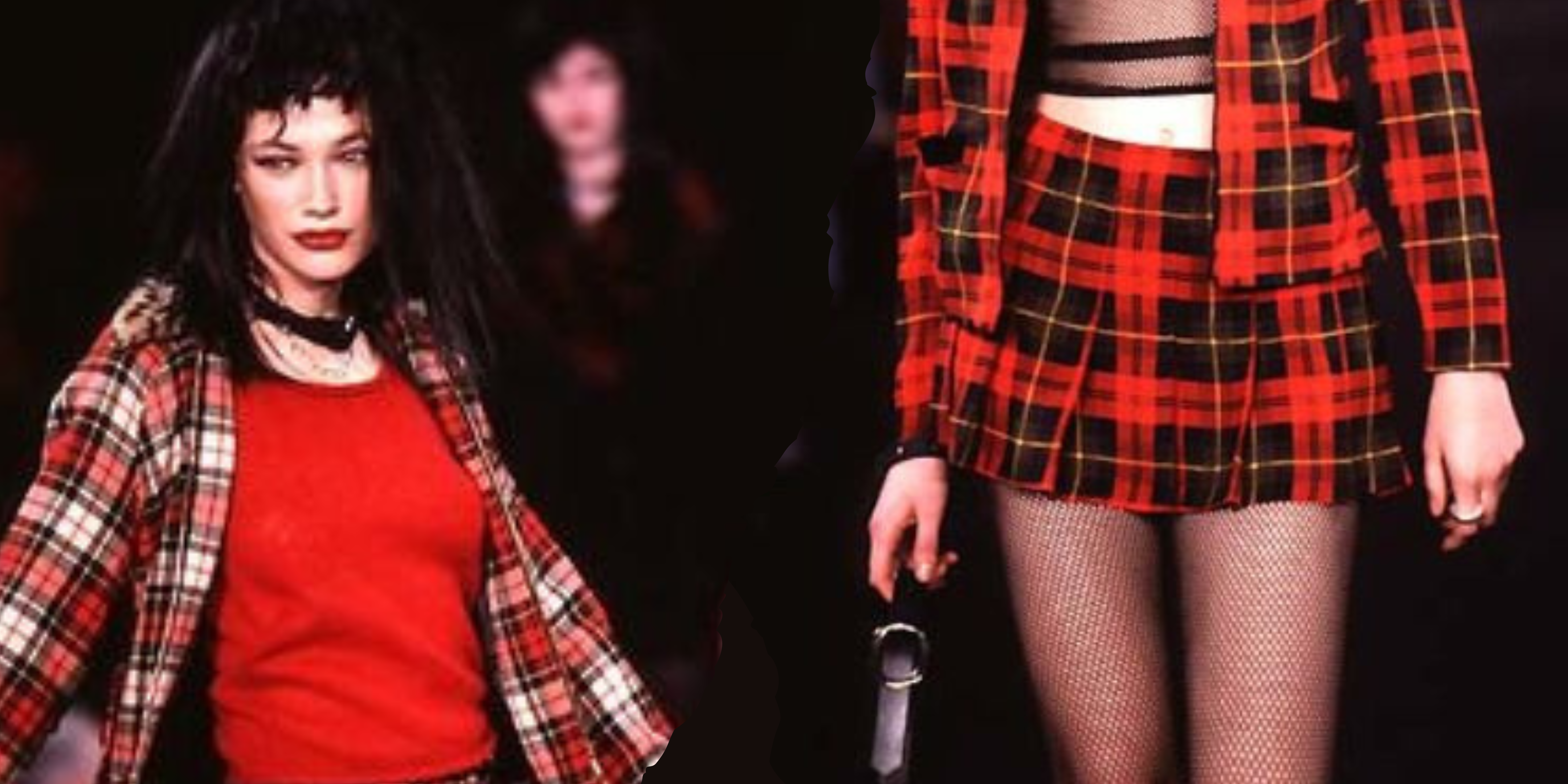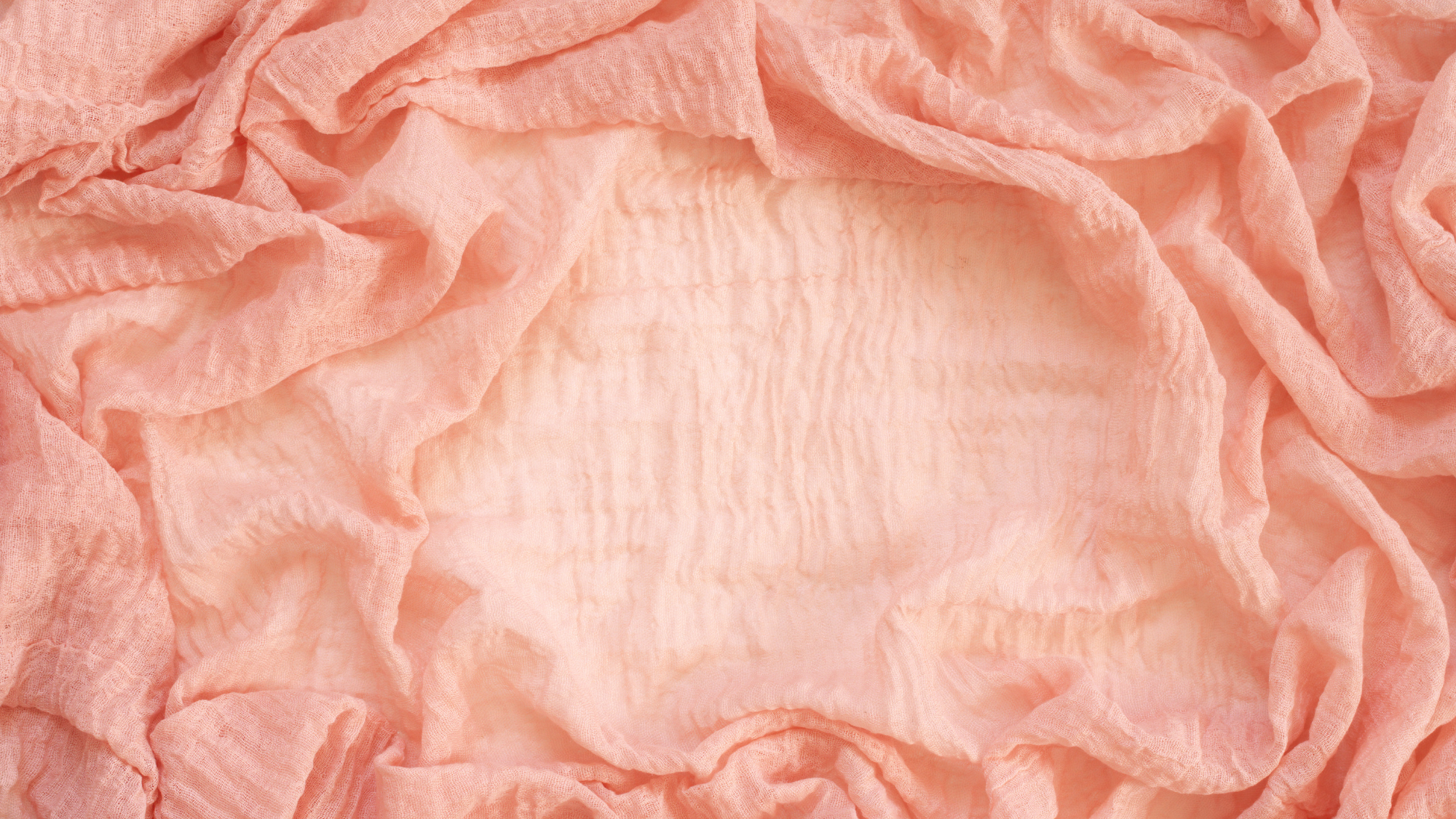
Zelouf Glitter Tulle in Grape and Silver
‘Tis the season to sparkle and shine! Glittery fabric is everywhere right now, in so many dazzling designs. But what are the different types of glittery fabric and how do you work with them? Learn more in the Zelouf guide to glittery fabric.
What are the different types of glittery fabric?
Glittery fabrics come in various types, each with its unique characteristics. Here are some common ones:
- Glitter Tulle: Tulle is a fine mesh fabric that can be infused with glitter to create a sparkling effect. It's often used in evening gowns, veils, and decorative elements in clothing.
- Sequined Fabric: Sequins are small, shiny embellishments that are sewn onto a base fabric to create a sparkling surface. Sequined fabrics can range from subtle to highly reflective, depending on the size and density of the sequins.
- Glitter Knit Fabric: This type of fabric features glittery threads woven into the knit, creating a sparkling effect. It's used in various clothing items like sweaters, dresses, and skirts.
- Glitter Mesh: Similar to glitter tulle, glitter mesh features tiny glitter particles embedded in a mesh or net-like fabric, adding sparkle and texture. It's used in apparel, accessories, and craft projects.
- Metallic Jacquard: Jacquard fabrics with metallic threads woven into intricate patterns or designs. These fabrics have a luxurious appearance and are often used in formal wear.
- Glitter Organza: Organza, a sheer and lightweight fabric, can be infused with glitter to create a delicate yet sparkly effect. It's commonly used in formal wear, overlays, and decorative elements.
- Glitter Satin: Satin fabric, known for its smooth and glossy surface, can also be manufactured with added glitter to enhance its sheen. It's used in evening gowns, lingerie, and accessories.
- Glitter Chiffon: Chiffon, a lightweight and sheer fabric, can be adorned with glitter for a subtle yet elegant shimmer. It's often used in scarves, eveningwear, and bridal attire.
- Glitter Velvet: Velvet, a plush fabric, can be made with added glitter for a rich, luxurious appearance. It's used in eveningwear, accessories, and upholstery.
Each type of glittery fabric offers its own distinct texture, shine, and usage, catering to different fashion needs and design preferences.

Zelouf Roller Glitter Chiffon in Sultry Rust
Can you make fabric glittery?
Absolutely, you can add glitter or create a glittery effect on fabric through various methods:
- Glitter Sprays or Fabric Sprays: There are specially formulated glitter sprays available that adhere to fabric. These sprays typically contain a mix of fine glitter particles and an adhesive that bonds to the fabric fibers. They can be sprayed onto the fabric surface to create a glittery effect.
- Fabric Glue and Loose Glitter: Using fabric glue, you can create designs or patterns on the fabric and then sprinkle loose glitter over the glued areas. Once the glue dries, it holds the glitter in place. This method allows for more control over the glitter placement.
- Glitter Heat Transfer Vinyl: Heat transfer vinyl, which comes in glitter finishes, can be cut into shapes or designs using a cutting machine. Then, using a heat press or iron, the vinyl can be transferred onto the fabric, creating a glittery design that adheres firmly.
- Glitter Iron-On Transfers: Similar to heat transfer vinyl, pre-made glitter iron-on transfers or patches can be applied to fabric using an iron or heat press. These transfers are designed to stick to the fabric and add a sparkling element.
- Glitter Fabric Paint: Fabric paint with glitter particles can be directly applied to fabric using a brush or stencil. This method allows for freehand designs or patterns to be created with glittery effects.
- Fabric with Embedded Glitter: Some fabrics come with glitter or metallic threads already woven into them, providing a built-in glittery effect.
When adding glitter to fabric, it's essential to follow the specific instructions provided for the chosen method or product. Additionally, consider the fabric type and how it might react to the application process to ensure the best results.
What are some tips for sewing glittery fabric?
Sewing with glittery fabric can present some unique challenges due to the added embellishments. Here are some tips to help make the process easier:
- Use the Right Needle: Opt for a sharp needle appropriate for the fabric type. For most glittery fabrics, a universal or sharp needle works well. However, if the fabric is particularly delicate or prone to snagging, consider using a microtex or ballpoint needle.
- Choose the Correct Thread: Select a high-quality thread that matches the fabric and the color of the glittery elements. Polyester or nylon threads generally work well with most glittery fabrics due to their strength and durability.
- Consider the Glitter Orientation: If the fabric has a specific direction or nap, pay attention to the orientation of the glitter particles. Ensure they all face the same way when cutting and sewing to maintain consistency.
- Use a Walking Foot or Teflon Foot: Glittery fabrics can be slippery or have uneven surfaces due to the glitter particles. Using a walking foot helps feed the fabric evenly through the machine. A Teflon foot or roller foot can also be beneficial, especially if the fabric has a metallic or vinyl surface.
- Test Stitch on Scrap Fabric: Before sewing on the actual project, test stitches on a scrap piece of the same fabric. This allows you to adjust tension, stitch length, and needle size if needed without risking damage to the main piece.
- Minimize Handling: Glittery fabrics can shed glitter particles, leading to a messy workspace. Minimize excessive handling of the fabric to reduce shedding and maintain cleanliness while sewing.
- Use Supportive Stabilizers: If the glittery fabric is lightweight or stretchy, use stabilizers like interfacing or stabilizing spray to provide support and prevent stretching or puckering during sewing.
- Clean the Sewing Machine Regularly: Glitter particles can accumulate in the sewing machine, potentially affecting its performance. Clean the machine regularly, including the bobbin case and feed dogs, to prevent buildup and ensure smooth sewing.
- Secure Seams Carefully: Backstitch at the beginning and end of seams to secure them properly. Avoid excessive handling or pulling at seams to prevent damage to the fabric or glittery surface.
By following these tips and taking extra care while sewing, you can achieve clean and professional-looking results when working with glittery fabrics.
How do I care for glittery fabric?
Taking care of glittery fabric requires a bit of special attention to preserve its appearance and integrity. Here are some general care instructions:
- Read the Label: Always start by checking the care label attached to the fabric. Manufacturers often provide specific instructions for washing, drying, and ironing that are tailored to the fabric type.
- Hand Washing or Gentle Cycle: If possible, hand washing is the gentlest method for cleaning glittery fabrics. If using a washing machine, select a delicate or gentle cycle with cold water to minimize damage to the glitter particles and fabric.
- Mild Detergent: Use a mild detergent that's suitable for delicate fabrics. Avoid harsh chemicals or bleach, as they can damage the glittery surface or the fabric itself.
- Turn Garments Inside Out: To protect the glittery surface, turn clothing items inside out before washing. This helps minimize direct contact between the glitter and the washing machine drum or other garments.
- Avoid Overcrowding: Don't overcrowd the washing machine or handwashing basin. This prevents excessive friction between items that could cause damage to the glittery surface.
- Air Dry or Low Heat: It's best to air dry glittery fabrics by laying them flat on a towel or drying rack. If using a dryer, use a low heat setting to prevent the excessive heat from damaging the glitter or the fabric.
- Ironing with Caution: If ironing is necessary, use a low heat setting and a pressing cloth to protect the glittery surface. Avoid direct contact between the iron and the glitter particles.
- Store Carefully: Store glittery garments or fabric in a cool, dry place away from direct sunlight to prevent fading and damage to the glittery elements. Avoid folding them for extended periods to prevent creasing.
- Spot Clean Carefully: If there are small stains, spot clean the affected area with a gentle detergent or stain remover suitable for the fabric. Test it on a small, inconspicuous area first to ensure it doesn't damage the glitter or fabric.
Always consider the specific type of glittery fabric when determining the best care practices. Some fabrics may have particular requirements due to their composition or construction, so following the manufacturer's recommendations is essential for maintaining the fabric's appearance and longevity.
Where can I buy glittery fabric?
At Zelouf Fabrics we have thousands of glittery fabrics available for purchase wholesale or by the yard. Explore our glitter collection on our online store!




